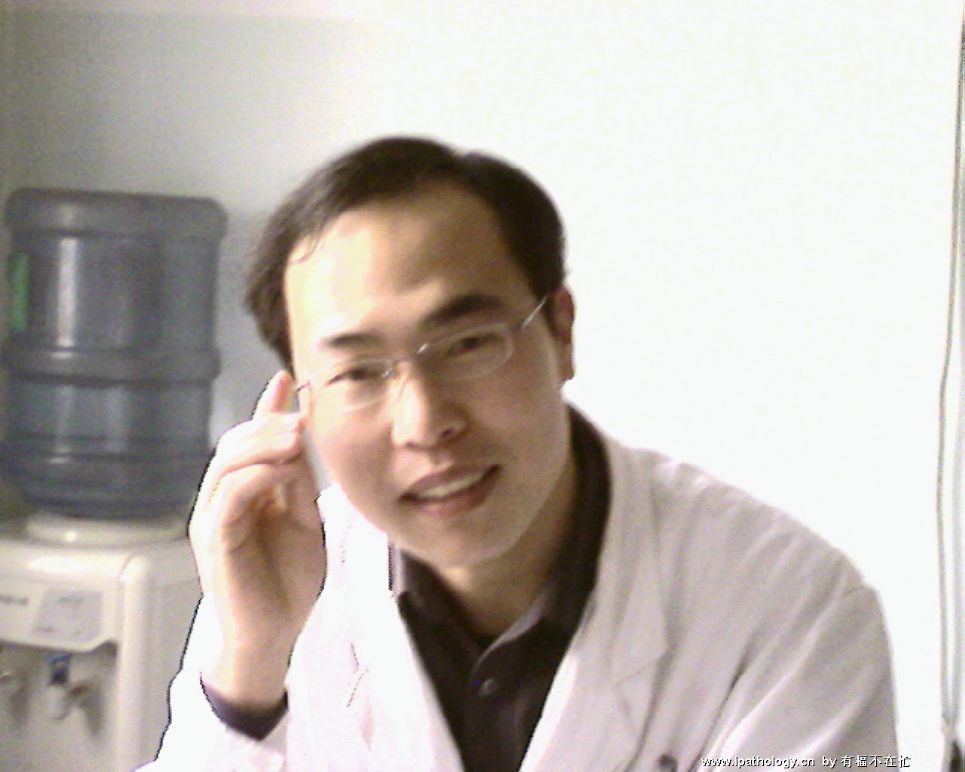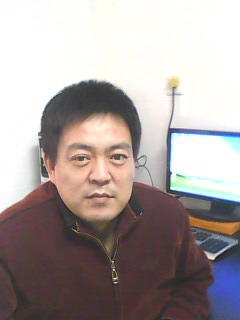| 图片: | |
|---|---|
| 名称: | |
| 描述: | |
- 肿瘤干细胞的发生机理和生理根据(与多能干细胞关系)
肿瘤干细胞的发生机理和生理根据(与多能干细胞关系)
当人受伤后,伤口会自己长好。这是由于损伤细胞的某些信号途径被破坏,而这些信号的作用是维持细胞的终末分化状态,抑制多能性。当信号被破坏后,细胞某些基因便开始表达,细胞开始出现多能性(即多能干细胞或单能干细胞),开始分裂分化,修复组织。(比如P53,P53被抑制后体细胞更容易重编程为多能干细胞,P53也是重要的肿瘤抑制因子)。伤口使细胞内信号途径损伤是外界因素,当伤口被修复后,阻断细胞信号的外界因素被消除,原来伤口处的干细胞沉默,维持为终末分化状态。
但如果人体自身的DNA损伤,也会造成细胞内信号途径的阻断,与上面机理相同,细胞会重新编程,但是DNA损伤造成的信号途径的阻断是有缺陷的、不可逆转的(非正常的信号阻断,在长期的进化过程中,细胞没有办法应对这种信号阻断),结果就是转化为肿瘤干细胞。肿瘤干细胞就是变态的“多能干细胞”,具有多能性,但其不会返回终末分化状态,所以无限分裂下去。
Research Highlights
Nature Reports Stem Cells
Published online: 20 August 2009 | doi:10.1038/stemcells.2009.112
p53 prevents pluripotency
http://www.nature.com/stemcells/ ... cells.2009.112.html
- Kanatsu-Shinohara, M. et al. Generation of pluripotent stem cells from neonatal mouse testis. Cell 119, 1001–1012 (2004). | Article | PubMed | ISI | ChemPort |
- Zhao, Y. et al. Two supporting factors greatly improve the efficiency of human iPSC generation. Cell Stem Cell 3, 475–479 (2008). | Article | PubMed | ChemPort |
- Hong, H. et al. Suppression of induced pluripotent stem cell generation by the p53-p21 pathway. Nature advance online publication, doi:10.1038/nature0823 9 August, 2009. | Article
- Kawamura, T. et al. Linking the p53 tumour suppressor pathway to somatic cell reprogramming. Nature advance online publication, doi:10.1038/nature08311 9 August, 2009. | Article
- Utikal, J. et al. Immortalization eliminates a roadblock during cellular reprogramming into iPS cells. Nature advance online publication, doi:10.1038/nature08285 9 August, 2009. | Article
- Li, H. et al. The Ink4a/Arf locus is a barrier for iPS cell reprogramming. Nature advance online publication, doi:10.1038/nature08290 9 August, 2009. | Article
- Marión, E. et al. A p53-mediated DNA damage response limits reprogramming to ensure iPS cell genomic integrity. Nature advance online publication, doi:10.1038/nature08287 9 August, 2009. | Article
- Elie Dolgin writes for Nature from Washington DC.
Research Highlights
Nature Reports Stem Cells
Published online: 20 August 2009 | doi:10.1038/stemcells.2009.112
p53 prevents pluripotency
Elie Dolgin1
The guardian of the genome also blocks reprogramming
The tumour suppressor gene p53 is well known as a master regulator that helps keep cancer at bay; now, a slew of papers demonstrate that it staves off reprogramming as well. Blocking the p53 pathway vastly improves the ease and efficiency of transforming differentiated cells into induced pluripotent stem cells. Not only could this knowledge make it easier to derive induced pluripotent stem cells from more patients with more diseases, but also it reveals a link between tumour formation and cellular reprogramming that could force a rethink about cancer development.
The p53 pathway was first linked to reprogramming five years ago when Japanese researchers showed that mouse germ cells spontaneously formed embryonic-like stem cells in the absence of p531. Then, last year, a Chinese team found that a combination of knocking down p53 with RNA interference and adding a little-studied transcription factor called Utf1 greatly increased human induced pluripotent stem (iPS) cell numbers2. Now, five studies published in Nature report that the p53 pathway alone acts to thwart cells from reverting back to a stem-like state. After disabling the pathway, the researchers saw their reprogramming rates soar more than 100-fold compared to most standard — and woefully inefficient — techniques.
"All of these papers add mechanistic information and corroboration that if you modify the p53 pathway somewhere along the way then it contributes to a very significant improvement in the derivation efficiency," says George Daley of Children's Hospital Boston, who was not involved in the research.
Using p53 knockout mouse cells and retroviruses containing the four most commonly used transcription factors — Oct4, Sox2, Klf4, and c-Myc — Shinya Yamanaka of Kyoto University in Japan coaxed up to 20% of embryonic fibroblasts to form fully fledged iPS cells. Yamanaka also omitted c-Myc and found he could still reprogram up to 10% of cells with just the 3 remaining factors. Immobilizing p53 also improved Yamanaka's reprogramming success with a safer, plasmid-based technique and allowed his team to transform mouse T cells — terminally differentiated cells that have proven difficult to reprogram3. Going one factor further, Juan Carlos Izpisúa Belmonte of the Salk Institute for Biological Studies in La Jolla, California, and the Center of Regenerative Medicine in Barcelona, Spain, successfully obtained iPS cells with only two transgenes — Oct4 and Sox2 — when p53 levels were reduced4.
In addition to demonstrating better efficiencies, Konrad Hochedlinger of the Massachusetts General Hospital in Boston showed that handicapping p53 speeds up the reprogramming process. When Hochedlinger inactivated either p53 or Ink4a/Arf, a locus that encodes two tumour suppressors that interact with p53, he found that iPS cells developed in only three or four days — around half the time normally needed5. Finally, two papers authored by Manuel Serrano and María Blasco of the Spanish National Cancer Research Centre in Madrid showed that eliminating the anti-tumour pathway improved the reprogramming of cells from older organisms6, as well as cells with heavy DNA damage or truncated telomeres7. Several of the research teams reported that blocking the p53 pathway improved reprogramming for human as well as mouse cells.
The p53 pathway switches on only after the reprogramming factors, which induce DNA damage, are introduced. Thus, cells that escape DNA damage may be less likely to turn on p53 and more likely to become pluripotent. "Only those that are pristine with no DNA damage at all are those that will be able to undergo reprogramming," says Serrano. In this way, adds Blasco, "p53 would be like a very important quality control for getting damage-free iPS cells". Thus, she says, modulating p53 introduces a trade-off between improving efficiencies and deriving only the best possible stem cells, so it might be unwise to knock down p53 when generating stem cells intended for the clinic.
But in some cases, notes Hochedlinger, improved reprogramming rates might be a prerequisite to obtaining any iPS cells at all. "If you think about making patient-specific stem cells, you are often confronted with the situation where you have very little material," he says. With such small samples, targeting the p53 pathway should allow researchers to obtain stem cells "reproducibly and efficiently", he says.
Silencing p53 should also help build cellular models of many human diseases that have so far proven refractory to reprogramming. For example, Daley's lab has attempted to derive patient-specific iPS cells for around 50 different diseases, but with only an 80%–90% success rate. "That still leaves 10%–20% unexplained," Daley says. "By abrogating p53, I think maybe we can get up to 95%."
The p53 link between pluripotency and cancer could challenge the widely held view that only a subset of specialized cells can trigger tumourigenesis, says Izpisúa Belmonte. If most adult cells can be made into iPS cells in the absence of p53, then almost any p53-lacking cells should be an eligible candidate for cancer initiation — a prediction that runs counter to the cancer stem cell hypothesis. "This set of papers hints that maybe that could be the case," Izpisúa Belmonte says.
Jacob Hanna of the Whitehead Institute for Biomedical Research in Cambridge , Massachusetts, notes that although the five new papers offer clues as to why the p53 pathway hinders reprogramming, they don't shed much new light on how exactly the cells that get past the p53 roadblock go on to become pluripotent. "It's beneficial to be able to more easily derive iPS cells," he says. But "we still don't know why we are getting these iPS cells".
Related articles
Cell origin and variation in induced pluripotent stem cell lines
New types of embryonic stem cells generated by stabilizing pluripotency
References
Author affiliations
-
yonghongchen 离线
- 帖子:162
- 粉蓝豆:2
- 经验:310
- 注册时间:2010-01-13
- 加关注 | 发消息
-
本帖最后由 于 2010-01-25 21:32:00 编辑
| 以下是引用有福不在忙在2009-11-22 23:08:00的发言:
长肿瘤其实不奇怪,细胞随便分裂,自由生长就成瘤了;不长肿瘤倒很不容易,为什么长成一定形状就不长了呢?研究清楚为什么不长肿瘤,肿瘤也就不攻自破了。 |

- 山西省汾阳市人,1990年吕梁卫校毕业,2007年山西医科大学病理学硕士研究生毕业,一直从事病理诊断工作,擅长免疫组化技术及诊断,发表论文多篇,完成市级科研4项,省级鉴定一项,获得市级科技进步奖两项,申请国家专利两项。
















